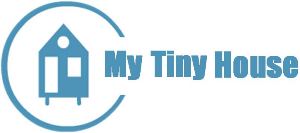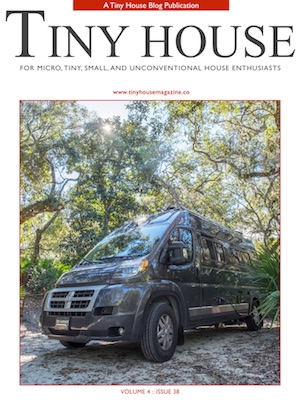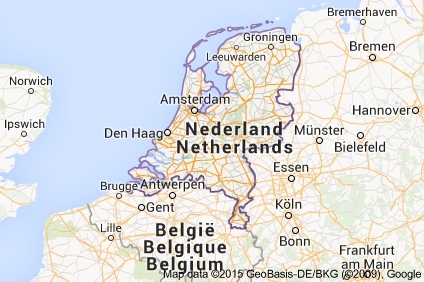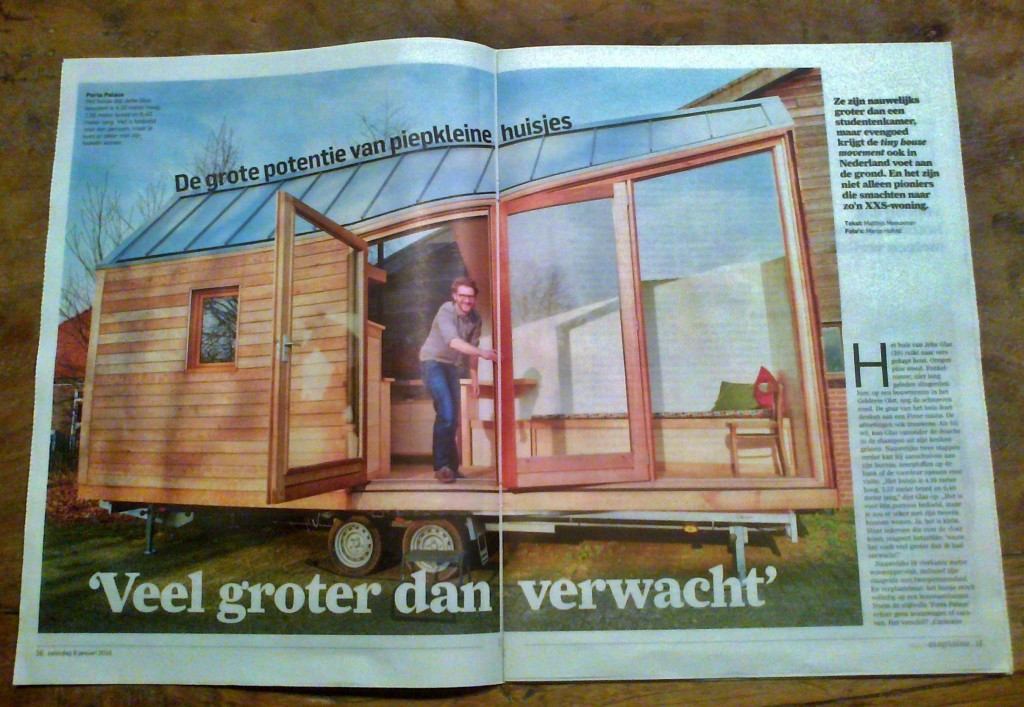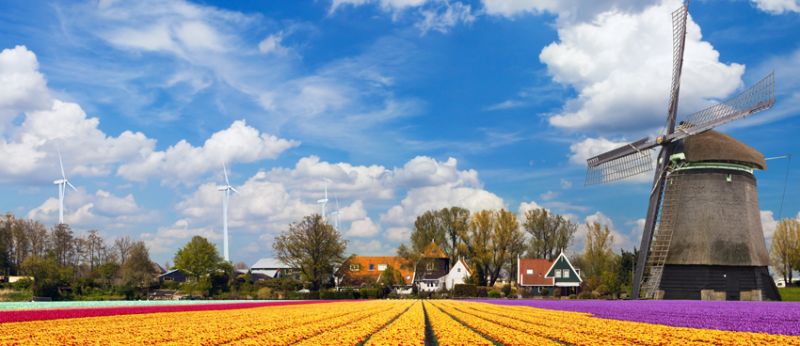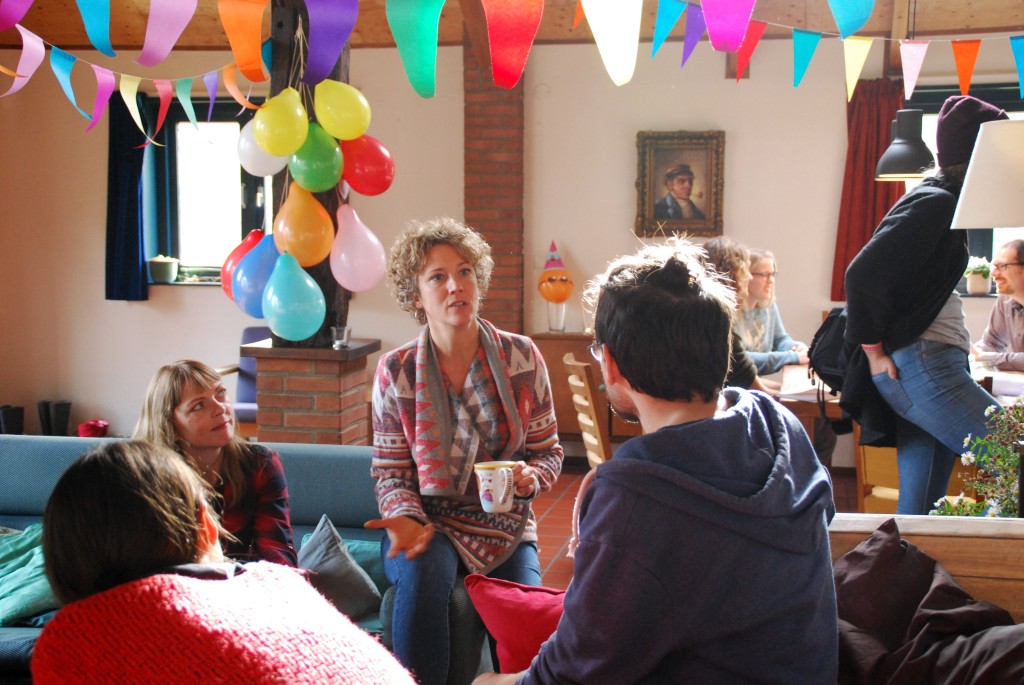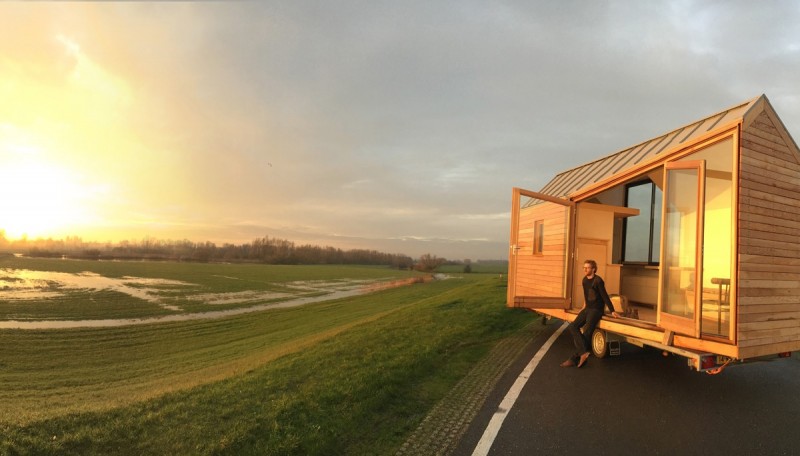-
A Dutch Touch in Tiny House Magazine #38
 Opnieuw aandacht voor de Nederlandse Tiny House Movement in Tiny House Magazine. Het is inmiddels een kleine serie geworden!
Opnieuw aandacht voor de Nederlandse Tiny House Movement in Tiny House Magazine. Het is inmiddels een kleine serie geworden!Deze keer aandacht voor hoe het leeft in ‘t land. Hoe zijn de reacties vanuit de politiek? Worden het Tiny House Villages of is er meer aan de hand? Wat is er mijns inziens nodig om de starre, eenzijdige woningmarkt open te breken? Kunnen tiny houses daarin bijdragen? Ja!
Naast mijn artikel in deze editie ook dit: reviews van tobbes en doucheputjes voor je tiny house. Je moet het maar net weten! Hoe voedsel te verbouwen als je klein woont. Hoe het is om te leven in RV parks. Onder andere!
Je kunt het gehele magazine aanschaffen (voor $4,99 te betalen met credit card of PayPal). Het magazine betreft een PDF bestand, ook beschikbaar voor iOs en Android. Tijdens het bestel-proces zul je het e-mailadres zien van Kent Griswold. Dat is de oprichter.
 Insert tiny house here!
Insert tiny house here!Part of the Dutch Touch series
Oh my! The Tiny House Movement is going crazy in the Netherlands! Almost every national newspaper has covered tiny houses in the last month. Television news shows talked about it during prime as well. They were almost nowhere to be found before, but 2016 seems to be the year of the tiny house for the Netherlands and it has started off with a BANG! It is interesting to see how it moves people, how local governments are responding and how eager people are who hear about the phenomenon for the first time.
Popping up like daisies

The National Newspaper Het AD showcasing the tiny home “Porta Palace by Woonpioniers”. A not so tiny article for a lovely tiny home and the movement in the Netherlands.
Last fall we had the first official Dutch Tiny House Meetup in my co-house. Sixteen people assembled creating a small yet fanatical group. In two months time new tiny house enthusiasts popped up like daisies. The Tiny House Nederland Facebook group now has 398 members and counting. The funny thing (and journalists who don’t know about tiny houses just yet are also surprised) is there are not many Dutch living tiny as of yet. There may be a handful but even those live under the radar. I personally spoke to a journalist for a national TV show and she thought it was going to be easy to find four or five tiny house people already living their tiny dream. Not so. Another journalist from a magazine for women asked me: “Can you give me contact details of a woman under the age of 35, living in a tiny home that she built herself, preferably with her boyfriend…and their dog?” Yes the group is growing rapidly, but most are just starting so there are few already living their tiny dream.
Focused on Tiny Villages
It’s interesting to see how society and politicians are responding as well. Several counties have shown interest in tiny houses for various reasons. Their interest in tiny houses from their standpoint is, at this moment, mainly focused on the idea of tiny villages and that sounds great to my ears. In fact, my personal opinion is that it is great. However, it is equally important to go beyond just tiny house villages. The movement on the whole is about so much more.
Traditionally the thought in the Netherlands is that homes are one with the land underneath them. They are a unit. As a people we literally fasten them to the ground with pilings. I think this is primarily a cultural thing: the oneness of home and land. In the Netherlands almost every plot of land has a purpose because of our dense population. Nearly 17 million people live on less than 1/6 of the state of Colorado. It’s practically a postage stamp on the world map. Interestingly enough though is that this stamp is also regularly found in the top five exporting countries in the world for agricultural products. We use the land in every way possible. To tiny house advocates like myself it seems logical for tiny houses to dot the Dutch landscape. The thought is that it is because we are a nation of permits, rules, and laws. We are so caught up in thinking about how to use and maximize land use and then commit that to paper (rules and regulations) that it seems difficult for us to think in terms of not being dependent on that system. Enter the tiny house. It is mobile, smaller than typical homes, on wheels and unattached. It is a system misfit.
And therein lies the problem. Tiny houses and the tiny house lifestyle aren’t looked at as a sort of nomadic commodity. Instead they end up in discussions about the use of land and how villages can be formed around them. It seems systematically impossible to think of a house here without also thinking of buying, selling, owning, borrowing, lending, renting, etc. Tiny houses break the mold of that land-house union. Yes you do need a plot of land if you want to park your tiny house. But what if you are able to park it on someone else’s property? What if you have made an agreement with the owners and the direct environment about the use? What if you barter for space by doing some chores or labor in return rather than being tied down to contracts? What if we view tiny houses as a more fluid way of living? Why do we have to nail ourselves to the ground? Why must be organized into groups and villages?
Tiny villages are needed though
Even still I do feel we need tiny villages too if for nothing more than for those who want to live in such a community setting. Even more importantly, it may pave the way towards getting rid of some of the immense and detailed building codes that currently prohibit housing variety for people who do not wish to own much and instead live small. The current housing market is not providing a lot of variety price wise, leaving a growing group behind.
The generation who’s missing out
Those who do feel left out or under-represented now have a name – like it or not. They are called the “net niet generatie”. It translates to “the generation who’s missing out” and is used in reference to those between the ages of
 25 and 40 who, due to the changing economy, did not buy homes in their twenties as an investment. And now that real estate isn’t such a great investment more people are renting. The downside is that renting from a private owner is quite expensive. Renting from a housing association is a better option financially but there is typically a waiting list for these spaces that can sometimes run up to ten years! And like the American real estate market and financial world if you do wish to buy a home, bank mortgages aren’t so easy to come by. Lenders want lendees to have a steady contract, which, more often than not, is not something companies are willing to provide any longer. It truly is a Catch-22 situation. The gap between what banks need and want from you and what employers are willing to provide you with is growing and is more proof as to why the tiny house and alternative housing market is growing so rapidly in the Netherlands.
25 and 40 who, due to the changing economy, did not buy homes in their twenties as an investment. And now that real estate isn’t such a great investment more people are renting. The downside is that renting from a private owner is quite expensive. Renting from a housing association is a better option financially but there is typically a waiting list for these spaces that can sometimes run up to ten years! And like the American real estate market and financial world if you do wish to buy a home, bank mortgages aren’t so easy to come by. Lenders want lendees to have a steady contract, which, more often than not, is not something companies are willing to provide any longer. It truly is a Catch-22 situation. The gap between what banks need and want from you and what employers are willing to provide you with is growing and is more proof as to why the tiny house and alternative housing market is growing so rapidly in the Netherlands.What do we need? We need it all!
We clearly need other ways of thinking when it comes to the use of land, the notion of true living and the available housing if we wish to get out of the clamp caused by the economical gap and the detailed laws and codes. Things need to move. We do need tiny villages. We do need stand-alone homes. We do need market awareness. We do need to understand how improper use of tiny houses can land us in the same place we are now with more traditional homes. Dialogue is needed. Different voices and perspectives are needed. Pioneers – those who don’t talk about it but just do it – are even needed. It’s all needed and right now.
Down the rabbit hole
Legalizing tiny houses won’t be easy on this densely populated, traditional, yet lovely stamp called The Netherlands. I wish I had all the answers but I don’t. I am every bit a pioneer myself. I am advocate for me, those around me, and even the politicians appointed to lead us. An open mind and heart is what the situation needs. It’s not just about tiny homes anymore. It’s about a bigger picture. It’s about living a life that fits you and contributes to the society around you.










